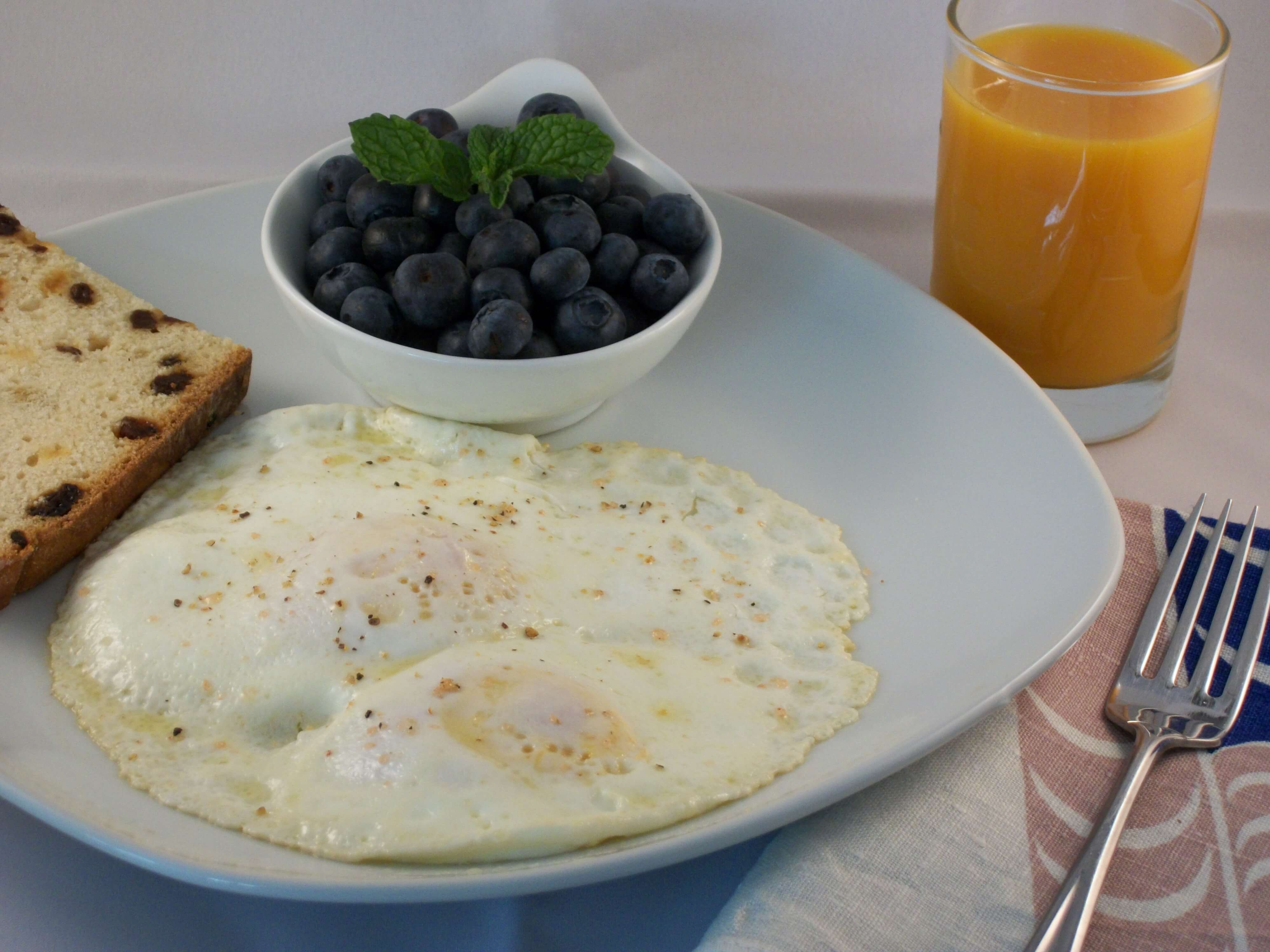Eggs: The Essential Healthy Food
Patti Cook, BA, MS, Ed.D., Culinary Grad and B & P Student
Whenever I get the chance to share my passion about how we can eat healthier, I always start with the suggestion to make food in your own kitchen and eat it with people you like. And, I often add, eat more eggs. They’re the perfect food: delicious, nutritious, protein-rich, inexpensive and a culinary canvas for what you have on hand.
Historically, eggs have been a treasured food. Legends and myths abound about their significance. The American Indians, for instance, thought that the Great Spirit was born from a giant golden egg to create the universe. Eggs are so important in the culinary world that chefs’ hats—correctly called toques—are pleated to represent the many ways eggs are used in cooking and baking. And, in my culinary program, there was a whole unit on egg cookery.
Although there are many types of edible poultry eggs (for example, duck and quail), the most common egg in America is the hen’s egg. All eggs have an exterior shell (inedible to most people). The interior (edible part) of an egg is composed of the white surrounding a yellow-to-orange yolk in the center.
When buying eggs, there are some key points to keep in mind. As food labels continue to get more complicated even eggs are included in the trend. Choices include size, color, conventional, organic and free-range. Most recipes are based on using large eggs. An egg’s shell color depends on the breed that laid it. Yes—in general, white hens lay white eggs and hens with darker colors lay eggs that have various colored shells, including shades of cream, brown and blue. I consistently find that local, free-range and/or organic eggs have superior taste and texture and are the best choice for all-purpose cooking. Yes, they do cost more, but they’re still one of the best bargain foods around.
I’ve never met an egg I didn’t like. I especially adore eggs over easy, which is a recipe that I perfected in culinary school. From my kitchen seat, properly cooking and then sitting down to food that has been valued for centuries as both significant and health-giving seems like a natural step to healthier eating.
Some Tips to Make Perfect Eggs Over Easy:
- Use large eggs; local farm eggs will definitely have more flavor and better texture than “standard” conventional grocery store eggs.
- Use the right pan—a 10-inch skillet works perfectly for 2 eggs. Given the recent negative data from research on nonstick pans, it’s worth buying an eco-safe nonstick skillet. Cast-iron is my preference for natural nonstick.
- Using a fork to gently pop the air bubbles on the whites creates a much more uniform texture and attractive appearance.
- Eggs get cold quickly so it is nice to serve them on a warm plate; simply put the plate in the oven for a few minutes on 250°F before you start to cook your eggs.
- An interesting salt (like Hawaiian pink salt or sea salt) and freshly ground black pepper provide delicious seasoning and really enhance flavor.
Eggs Over Easy
Serves 1-2 (most people eat 2 eggs so this recipe is usually enough to serve 1; however, some are satisfied with 1egg served with buttered toast.
Ingredients:
½ tablespoon butter
2 eggs
pinch of salt
pinch of freshly ground pepper
Preparation:
- Melt butter in a medium nonstick skillet over medium-high heat.
- When the butter is melted and sizzling slightly, turn heat down to medium. Crack eggs and gently drop into skillet.
- Use a fork to gently pop any air bubbles on the whites being careful not to break the yolk.
- When the whites are slightly set and no longer translucent, gently flip over. Allow the eggs to set on the other side, only a minute or 2, then slide onto a plate. If you prefer them over-medium, cook a few minutes more (but watch carefully: you don’t really want the yolks to be cooked through because they’ll be hard and dried out).
- Season with salt and pepper as desired.
- Slide onto a warm plate.


